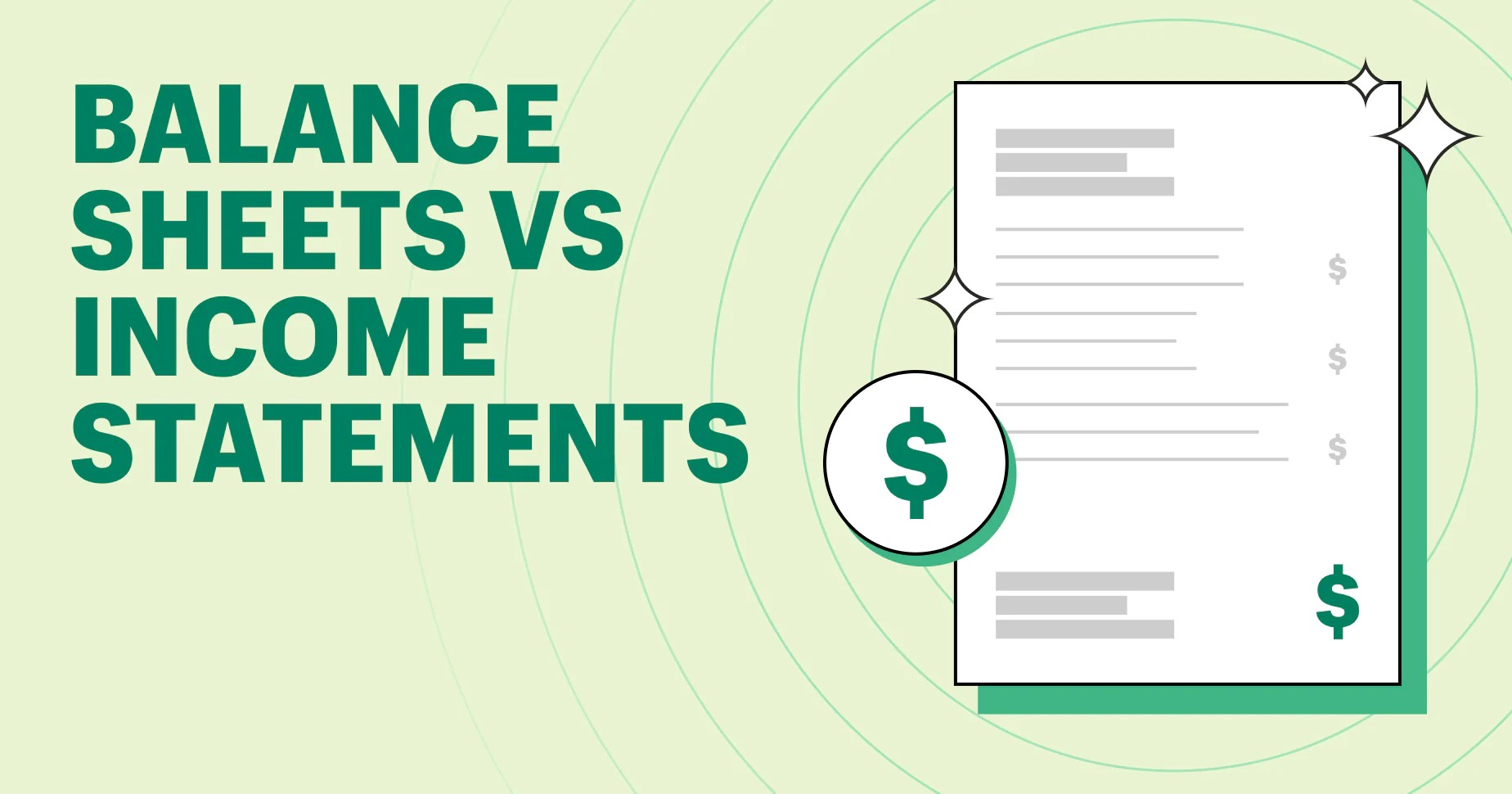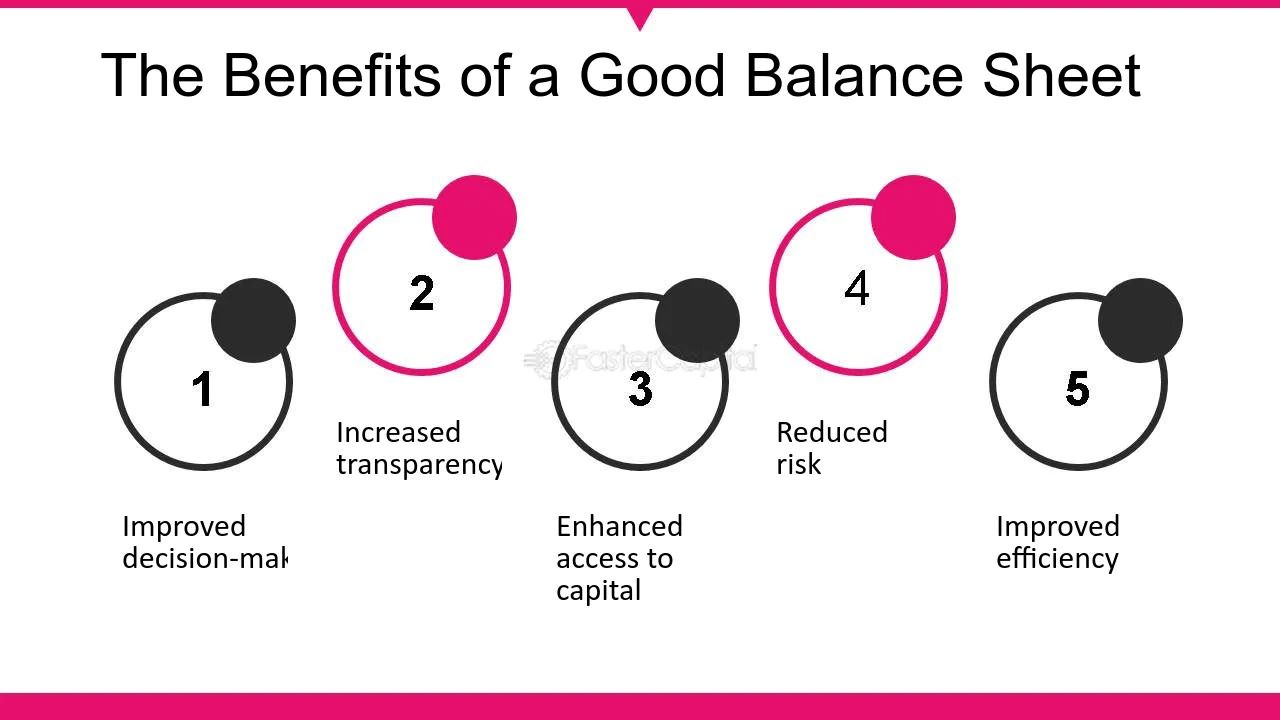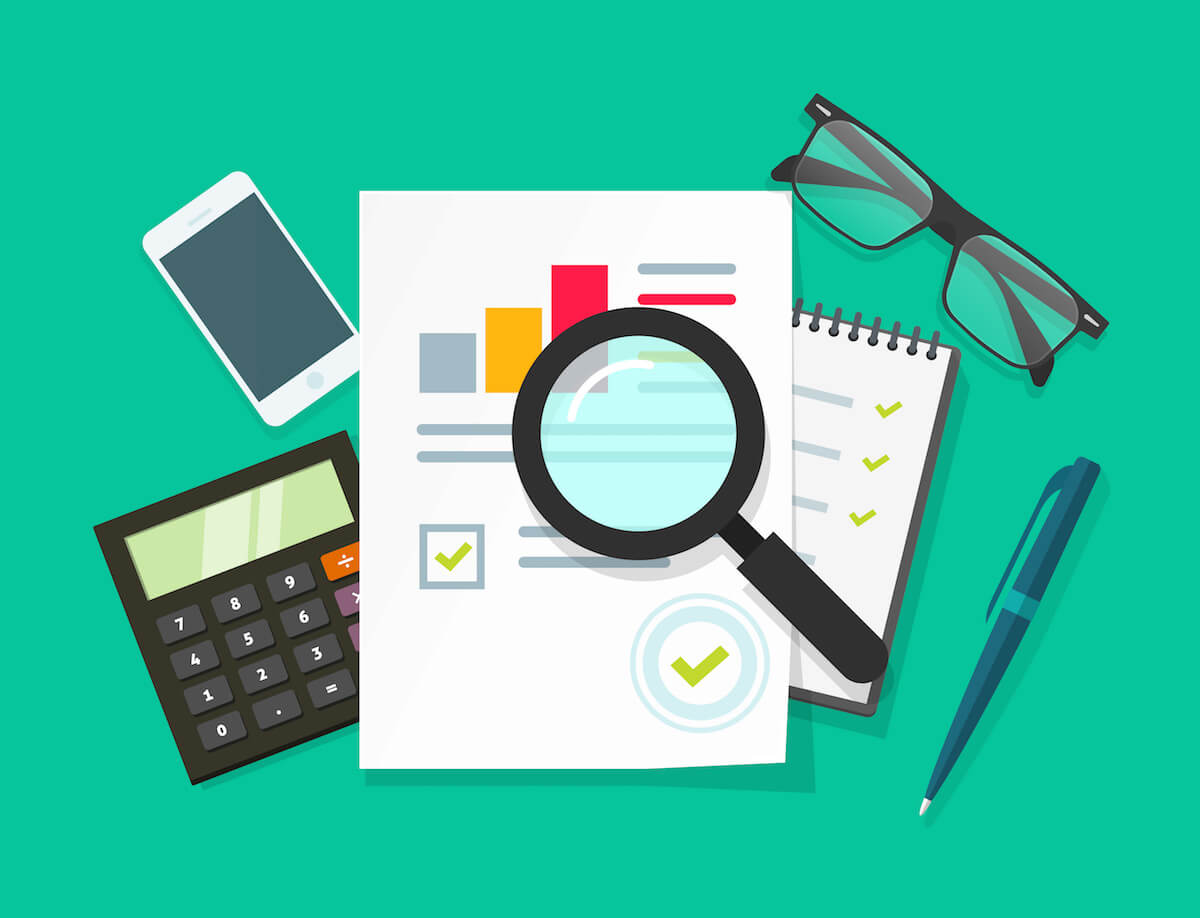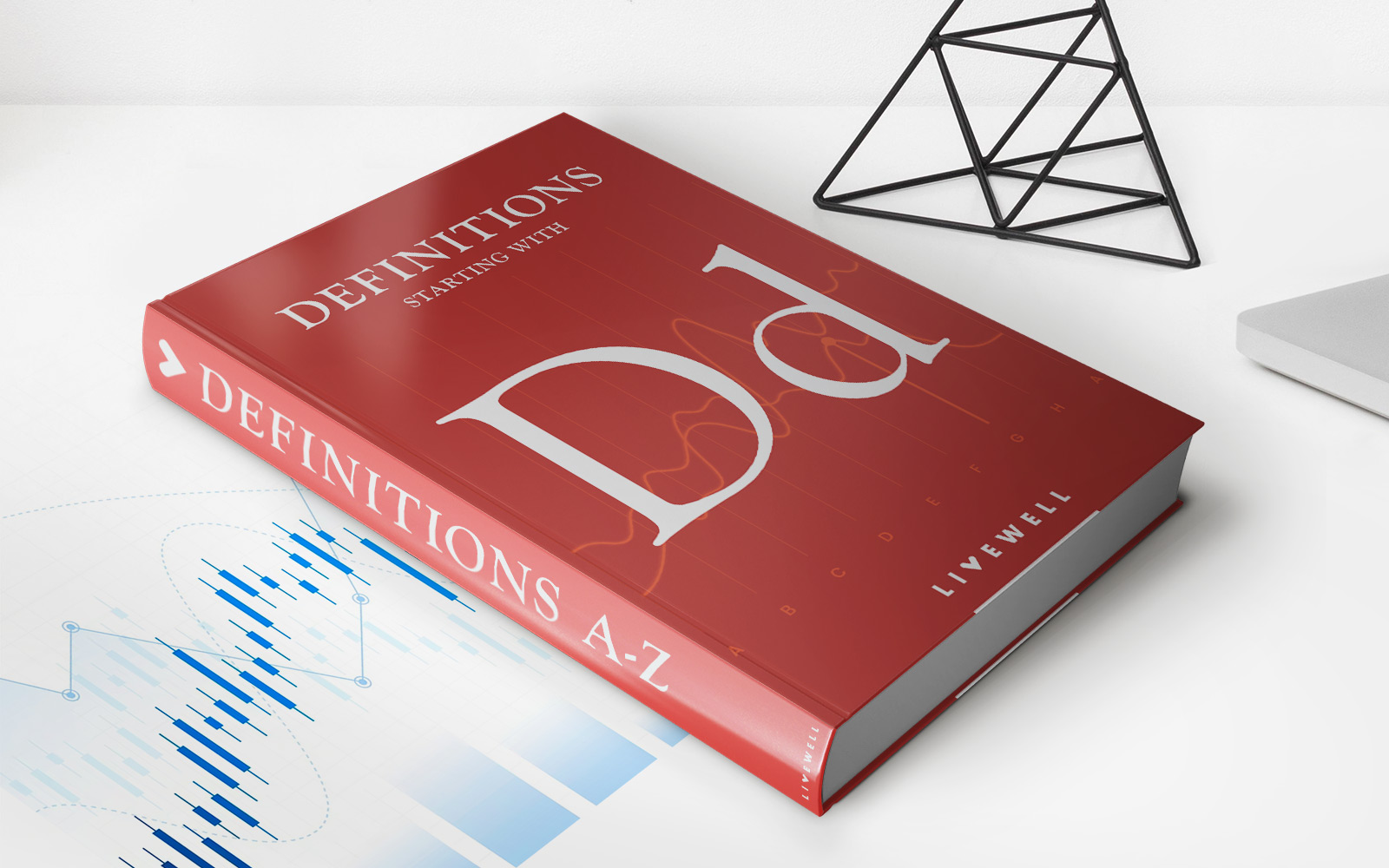

Finance
What Is A Balance Sheet Vs Income Statement
Modified: March 2, 2024
Learn the difference between a balance sheet and an income statement in finance. Gain insights into how these financial statements provide a comprehensive view of a company's financial health.
(Many of the links in this article redirect to a specific reviewed product. Your purchase of these products through affiliate links helps to generate commission for LiveWell, at no extra cost. Learn more)
Table of Contents
- Introduction
- Definition of Balance Sheet
- Definition of Income Statement
- Purpose of Balance Sheet
- Purpose of Income Statement
- Format of Balance Sheet
- Format of Income Statement
- Components of Balance Sheet
- Components of Income Statement
- Differences Between Balance Sheet and Income Statement
- Importance of Balance Sheet
- Importance of Income Statement
- Conclusion
Introduction
When it comes to financial analysis and understanding the performance of a company, two fundamental financial statements play a crucial role: the balance sheet and the income statement. These statements provide valuable insights into a company’s financial health, liquidity, profitability, and overall performance. While both statements are important, they serve different purposes and provide different types of information.
In this article, we will explore the differences between a balance sheet and an income statement, their respective formats, components, and the importance of each statement in evaluating a company’s financial position. Understanding these financial statements is essential for investors, analysts, and individuals looking to assess a company’s financial well-being and make informed decisions.
It is important to note that the information presented in both the balance sheet and the income statement is derived from a company’s financial records and reflects its financial activities over a specific period. Let us dive deeper into the definitions and purposes of each statement.
Definition of Balance Sheet
The balance sheet, also known as the statement of financial position, is a financial statement that provides a snapshot of a company’s financial position at a specific point in time. It presents a summary of what a company owns (assets), what it owes (liabilities), and the remaining equity or ownership interest of the company’s shareholders.
The balance sheet follows the fundamental accounting equation: Assets = Liabilities + Equity. This equation reflects the idea that a company’s assets, which include tangible and intangible items of value, are financed by either external sources such as loans and creditors (liabilities) or internal sources such as retained earnings and shareholder investments (equity).
The balance sheet is structured into two main sections: the left-hand side represents the company’s assets, while the right-hand side represents its liabilities and equity. The assets are further classified into current assets, which are expected to be converted into cash within one year, and non-current assets, which have a longer lifecycle.
The liabilities section includes current liabilities, which are debts and obligations due within one year, and non-current liabilities, which have a longer repayment term. Equity represents the residual interest in the assets of the company after deducting liabilities. It includes the shareholders’ equity, which comprises common stock, retained earnings, and additional paid-in capital.
The balance sheet provides valuable information about the company’s liquidity, solvency, and financial stability. It helps analysts and investors assess the financial health of a company by examining its ability to meet short-term obligations (liquidity) and the proportion of debt to equity (solvency).
Next, let’s explore the definition and purpose of the income statement.
Definition of Income Statement
The income statement, also known as the profit and loss statement or statement of earnings, is a financial statement that provides a summary of a company’s revenues, expenses, and net income (or net loss) over a specific period of time, typically a fiscal quarter or year. It highlights the company’s ability to generate profits by comparing its revenues with the expenses incurred to generate those revenues.
The income statement follows a simple equation: Revenues – Expenses = Net Income (or Net Loss). It reflects the company’s ability to generate sales, control costs, and ultimately generate profits from its core operations.
The income statement is divided into several sections. The top section presents the company’s total revenues or sales, which are generated from the sale of goods or services. These revenues may include sales revenue, service revenue, interest income, or any other income earned by the company.
The next section focuses on the expenses incurred by the company to generate those revenues. These expenses include the cost of goods sold, operating expenses such as salaries, rent, and utilities, depreciation and amortization, interest expenses, and taxes. By deducting the total expenses from the total revenue, we arrive at the company’s operating income (or operating loss).
Below the operating income, there might be additional sections that include non-operating revenues and expenses, such as gains or losses from investments or asset sales, interest income, or interest expenses. Finally, after considering all revenues and expenses, the income statement presents the company’s net income (or net loss), which represents the profit or loss made by the company during the specific period.
The income statement provides key insights into a company’s profitability, efficiency, and financial performance. It helps investors, creditors, and analysts assess the company’s ability to generate consistent profits, control costs, and predict future earnings potential. By analyzing the income statement, stakeholders can evaluate the company’s growth prospects, its ability to generate cash flows, and its overall financial viability.
Now that we have established the definitions of both the balance sheet and income statement, let’s explore their respective purposes in more detail.
Purpose of Balance Sheet
The balance sheet serves several important purposes in evaluating a company’s financial position. Its primary objective is to provide a snapshot of the company’s financial health at a specific point in time. By presenting the company’s assets, liabilities, and shareholders’ equity, the balance sheet helps stakeholders understand the company’s financial stability, liquidity, and solvency.
One of the key purposes of the balance sheet is to assess the company’s liquidity. By analyzing the current assets and current liabilities, investors and creditors can determine whether the company has enough short-term assets to cover its short-term obligations. This is crucial in evaluating the company’s ability to meet its working capital requirements and handle day-to-day operations.
The balance sheet also helps in evaluating the company’s solvency. By analyzing the long-term assets and long-term liabilities, stakeholders can assess the proportion of debt to equity and evaluate the company’s ability to meet its long-term debt obligations. This information is particularly important for creditors and potential investors who want to understand the risk involved in dealing with the company.
Another purpose of the balance sheet is to evaluate the company’s financial stability. By considering the composition of assets, liabilities, and shareholders’ equity, stakeholders can assess how the company is financed and its capital structure. For example, a high proportion of debt relative to equity may indicate higher financial risk, while a higher level of retained earnings may signify stability and financial strength.
Additionally, the balance sheet facilitates the calculation of important financial ratios that help in analyzing a company’s performance. Ratios such as the current ratio (current assets divided by current liabilities), debt-to-equity ratio (total debt divided by total equity), and return on equity (net income divided by shareholders’ equity) provide valuable insights into a company’s financial performance and can be compared to industry benchmarks to assess its relative strength.
Overall, the balance sheet is a crucial financial statement that provides a comprehensive overview of a company’s financial position. It assists stakeholders in evaluating the company’s liquidity, solvency, financial stability, and capital structure. By understanding the purpose and components of the balance sheet, investors, creditors, and analysts can make informed decisions and assess the potential risks and rewards associated with investing or conducting business with the company.
Next, let’s explore the purpose of the income statement and its role in assessing a company’s financial performance.
Purpose of Income Statement
The purpose of the income statement is to provide a comprehensive view of a company’s financial performance over a specific period. It reveals the company’s ability to generate revenues, control expenses, and ultimately determine its profitability or net income. The income statement serves several important purposes in evaluating a company’s financial health and performance.
One of the main purposes of the income statement is to assess the company’s profitability. By analyzing the revenue generated from sales and deducting the expenses incurred to generate those revenues, stakeholders can determine the company’s gross profit, operating profit, and net profit (or net loss) for the period. This information helps investors, creditors, and analysts evaluate the company’s ability to generate consistent profits and its overall financial viability.
Another purpose of the income statement is to identify trends and patterns in the company’s revenues and expenses. By comparing the income statement from different periods, stakeholders can track changes in sales, costs, and profitability over time, enabling them to identify potential areas of improvement or concerns. This helps in evaluating the company’s growth prospects and its ability to adapt to changing market conditions.
The income statement also plays a crucial role in determining the company’s operational efficiency. By analyzing the ratio of expenses to revenues, stakeholders can evaluate how effectively the company is managing its costs and controlling expenses. This insight is valuable in assessing the company’s ability to optimize its operations and improve its overall profitability.
Additionally, the income statement helps in making financial projections and forecasts. By analyzing historical revenue and expense patterns, stakeholders can make informed predictions about the company’s future earnings potential. This information is essential for investors and analysts when making investment decisions or valuing the company.
Moreover, the income statement provides valuable insights into the distribution of the company’s revenues and expenses among different business segments or product lines. This allows stakeholders to evaluate the profitability and contribution of each segment, helping them make strategic decisions and allocate resources more effectively.
In summary, the income statement serves as a crucial financial statement for assessing a company’s financial performance. Its purpose is to evaluate the company’s profitability, identify trends, assess operational efficiency, make financial projections, and analyze the contribution of different business segments. By understanding the purpose and components of the income statement, stakeholders can gain a comprehensive understanding of the company’s financial performance and make informed decisions.
Now that we have explored the purpose of both the balance sheet and the income statement, let’s delve into their respective formats and components.
Format of Balance Sheet
The balance sheet follows a standardized format that presents a snapshot of a company’s financial position at a specific point in time. It is structured into two main sections: Assets and Liabilities & Shareholders’ Equity.
The Assets section is typically presented on the left-hand side of the balance sheet. It includes all the resources owned by the company, which can be classified into two categories: current assets and non-current assets.
Current assets are assets that are expected to be converted into cash or used up within one year. Examples of current assets include cash and cash equivalents, accounts receivable, inventory, and short-term investments. These assets are listed in the order of their liquidity, with the most liquid assets (such as cash) appearing at the top.
Non-current assets, also known as long-term assets, have a lifecycle longer than one year. They include assets such as property, plant, and equipment, intangible assets (such as patents and trademarks), long-term investments, and deferred tax assets. Non-current assets are listed below current assets on the balance sheet.
The Liabilities & Shareholders’ Equity section is typically presented on the right-hand side of the balance sheet. It consists of two major components: liabilities and shareholders’ equity.
Liabilities represent the company’s debts and obligations. Similar to assets, liabilities are classified into current liabilities and non-current liabilities.
Current liabilities include obligations that are expected to be settled within one year, such as accounts payable, short-term loans, and accrued expenses. Non-current liabilities, also known as long-term liabilities, have a repayment term longer than one year and typically include long-term loans, bonds payable, and deferred tax liabilities.
Shareholders’ equity represents the portion of the company’s assets that belongs to the shareholders. It is calculated by deducting the company’s total liabilities from its total assets. Shareholders’ equity includes components such as common stock, retained earnings, and additional paid-in capital.
The balance sheet format emphasizes the fundamental accounting equation: Assets = Liabilities + Shareholders’ Equity. This equation ensures that the balance sheet remains in balance, as the total assets must always equal the total liabilities and shareholders’ equity.
Overall, the balance sheet format provides a clear and organized presentation of a company’s financial position by categorizing assets, liabilities, and shareholders’ equity. This structure allows stakeholders to assess the company’s liquidity, solvency, and financial stability effectively.
Now that we understand the format of the balance sheet, let’s move on to the format of the income statement.
Format of Income Statement
The income statement, also known as the profit and loss statement, follows a standardized format that presents a summary of a company’s revenues, expenses, and net income (or net loss) over a specific period. It provides important insights into a company’s financial performance and profitability.
The income statement is commonly structured into several key sections:
- Revenue: This section represents the total revenue generated by the company during the period. Revenue includes sales of goods or services, interest income, and any other sources of income. It is typically presented at the top of the income statement.
- Cost of Goods Sold (COGS): This section includes all the costs directly associated with producing or delivering the goods or services sold by the company. It includes costs such as raw materials, labor, and manufacturing overhead. The COGS is deducted from the revenue to calculate the gross profit.
- Gross Profit: This section represents the difference between the revenue and the cost of goods sold. It reflects the profitability of the company’s core operations before considering other operating expenses.
- Operating Expenses: This section includes all the expenses incurred in running the company’s day-to-day operations. It typically includes items such as salaries, rent, utilities, marketing expenses, research and development costs, and other administrative expenses.
- Operating Income (or Loss): This section represents the company’s profitability from its core business operations. It is calculated by subtracting the operating expenses from the gross profit.
- Non-Operating Items: This section includes any non-operating revenues and expenses that are unrelated to the company’s core business operations. It may include items such as interest income, interest expenses, gains or losses from the sale of assets, and income from investments.
- Net Income (or Net Loss): This section represents the company’s overall profitability after accounting for all revenues, expenses, and non-operating items. It is calculated by subtracting the non-operating expenses from the operating income (or adding non-operating income) and considering taxes.
The income statement format aims to provide a clear and concise summary of a company’s revenues, expenses, and profitability. It allows stakeholders to assess the company’s ability to generate profits from its core operations and evaluate its overall financial performance.
By analyzing the income statement, stakeholders can identify trends in revenue growth, monitor changes in expenses, and evaluate the company’s efficiency in controlling costs. The format of the income statement enables investors, analysts, and creditors to make informed decisions about the company’s financial health and prospects.
Now that we have covered the format of both the balance sheet and the income statement, let’s move on to discussing the components of each statement.
Components of Balance Sheet
The balance sheet is composed of various components that provide a comprehensive overview of a company’s financial position. These components categorize and present the assets, liabilities, and shareholders’ equity of the company. Understanding the key components of the balance sheet is essential for evaluating a company’s financial health and analyzing its financial position.
- Assets: The assets section of the balance sheet represents the resources owned by the company. It is typically divided into two categories:
- Current Assets: Current assets are assets that are expected to be converted into cash or used up within one year. This includes cash and cash equivalents, accounts receivable, inventory, prepaid expenses, and short-term investments.
- Non-current Assets: Non-current assets, also known as long-term assets, have a lifecycle longer than one year. This includes property, plant, and equipment (PP&E), intangible assets, long-term investments, and deferred tax assets.
- Liabilities: The liabilities section represents the company’s debts and obligations. Similar to assets, liabilities are classified into current liabilities and non-current liabilities.
- Current Liabilities: Current liabilities are obligations that are expected to be settled within one year. Examples include accounts payable, short-term loans, accrued expenses, and current portion of long-term debt.
- Non-current Liabilities: Non-current liabilities, also referred to as long-term liabilities, have a repayment term longer than one year. This includes long-term loans, bonds payable, lease obligations, pension liabilities, and deferred tax liabilities.
- Shareholders’ Equity: Shareholders’ equity represents the residual interest in the company’s assets after deducting liabilities. It includes various components:
- Common Stock: Common stock represents the shares issued by the company to raise capital from shareholders.
- Retained Earnings: Retained earnings are the accumulated profits generated by the company that have not been distributed as dividends.
- Additional Paid-in Capital: Additional paid-in capital represents the excess amount received from shareholders for the issuance of stock over its par value.
- Treasury Stock: Treasury stock refers to the company’s own shares that have been repurchased and are held by the company.
- Other Comprehensive Income: Other comprehensive income includes gains or losses that are not recognized in the income statement, such as foreign currency translation adjustments and unrealized gains or losses on available-for-sale securities.
These components of the balance sheet provide a comprehensive view of a company’s financial position by categorizing its assets, liabilities, and shareholders’ equity. Analyzing the components helps stakeholders evaluate a company’s liquidity, solvency, capital structure, and overall financial stability.
Now that we have explored the components of the balance sheet, let’s move on to discussing the components of the income statement.
Components of Income Statement
The income statement consists of several components that provide insights into a company’s financial performance and its ability to generate profits. These components help stakeholders understand the sources of revenue, the costs incurred, and ultimately determine the net income or net loss for a specific period. Let’s take a closer look at the key components of the income statement:
- Revenue: Revenue refers to the amount earned from the sale of goods, services, or other operating activities. It represents the primary source of income for a company and is typically listed at the top of the income statement.
- Cost of Goods Sold (COGS): The cost of goods sold represents the direct costs incurred in producing or delivering the goods or services sold by the company. It includes expenses such as raw materials, direct labor, and manufacturing overhead directly related to the production process. Subtracting the COGS from revenue gives the gross profit.
- Gross Profit: Gross profit is the difference between revenue and the cost of goods sold. This figure reflects the profitability of the company’s core operations before considering other operating expenses.
- Operating Expenses: Operating expenses consist of costs incurred to support the day-to-day operations of the business. This includes items such as salaries and wages, rent, utilities, marketing expenses, research and development costs, and other administrative expenses.
- Operating Income (or Loss): Operating income, also known as operating profit or operating loss, represents the result of subtracting operating expenses from gross profit. It reflects the profitability of the company’s core business operations.
- Non-Operating Items: Non-operating items are revenues, expenses, gains, or losses that are unrelated to the company’s core business operations. This can include interest income, interest expenses, gains or losses from the sale of assets, and income from investments.
- Net Income (or Net Loss): The net income or net loss represents the final result after considering all revenues, expenses, gains, and losses. It is calculated by subtracting the non-operating expenses (or adding non-operating income) from operating income and considering taxes.
These components of the income statement provide a comprehensive view of a company’s revenue generation, cost structure, and profitability. Analyzing these components allows stakeholders to assess the company’s ability to generate profits from its core operations and evaluate its overall financial performance.
By examining the income statement components, stakeholders can assess revenue trends, evaluate expense control, and determine the company’s net income or net loss. This information is crucial for investors, creditors, and management to make informed decisions and evaluate the company’s financial health.
Now that we have explored the components of both the balance sheet and the income statement, let’s move on to understanding the differences between these two important financial statements.
Differences Between Balance Sheet and Income Statement
The balance sheet and the income statement are two distinct financial statements that provide different types of information about a company’s financial position and performance. Here are the key differences between these two statements:
- Timing: The balance sheet provides a snapshot of the company’s financial position at a specific point in time, typically at the end of the reporting period. In contrast, the income statement summarizes the company’s financial performance over a specific period, such as a fiscal quarter or year.
- Information Presented: The balance sheet presents the company’s assets, liabilities, and shareholders’ equity, providing insights into the company’s financial position at a given moment. On the other hand, the income statement shows the company’s revenues, expenses, and profitability, highlighting its ability to generate profits over a specific period.
- Purpose: The balance sheet is designed to evaluate the company’s financial health, liquidity, solvency, and capital structure. It helps stakeholders assess the company’s ability to meet short-term and long-term obligations. The income statement, on the other hand, focuses on the company’s financial performance and profitability, assessing its ability to generate revenue, control expenses, and determine net income or net loss.
- Format: The balance sheet has a specific format that categorizes assets, liabilities, and shareholders’ equity into distinct sections. It follows the fundamental accounting equation: Assets = Liabilities + Equity. The income statement, on the other hand, is structured to present revenues, expenses, and profitability in a sequential manner, beginning with revenue at the top and ending with net income or net loss at the bottom.
- Measurement: The balance sheet contains values that represent historical costs, indicating the value of assets and liabilities at the time of acquisition. Conversely, the income statement reflects revenue and expenses on an accrual basis, recognizing them when they are earned or incurred, regardless of cash flow timing.
- Longevity: The balance sheet provides a cumulative view of a company’s financial position over time, as it incorporates information from previous periods. The income statement, on the other hand, focuses on the current period’s financial performance and is typically not cumulative.
While both the balance sheet and the income statement are crucial in assessing a company’s financial position and performance, they serve different purposes and provide distinct information. The balance sheet evaluates a company’s financial health and position, while the income statement assesses its financial performance and profitability over a specific period of time.
Now that we understand the differences between the balance sheet and the income statement, let’s explore the importance of the balance sheet in evaluating a company’s financial position.
Importance of Balance Sheet
The balance sheet is a vital financial statement that holds considerable importance in evaluating a company’s financial position. It provides valuable insights into the company’s liquidity, solvency, and overall financial health. Here are some key reasons why the balance sheet is important:
- Financial Health Assessment: The balance sheet allows stakeholders to assess the financial health of a company. By evaluating assets, liabilities, and shareholders’ equity, investors, analysts, and creditors can gauge the company’s ability to meet its short-term and long-term obligations. It provides a comprehensive overview of the company’s financial position at a specific point in time, indicating whether the company has the necessary resources to sustain its operations.
- Liquidity Evaluation: Liquidity is essential for the day-to-day operations of a company. The balance sheet enables stakeholders to assess the company’s liquidity by considering the proportion of current assets to current liabilities. It helps determine if the company has sufficient short-term assets, such as cash, accounts receivable, or inventory, to cover its short-term liabilities.
- Solvency Analysis: Solvency refers to a company’s ability to meet its long-term debt obligations. The balance sheet provides information on the company’s long-term assets, long-term liabilities, and shareholders’ equity, enabling stakeholders to evaluate the company’s financial stability and long-term solvency. By assessing the proportion of debt to equity, investors and lenders can determine the company’s financial risk and evaluate its capacity to repay its long-term obligations.
- Capital Structure Evaluation: The balance sheet reflects the company’s capital structure by presenting the composition of shareholders’ equity and debt financing. It helps stakeholders assess the proportion of funds raised from equity and loans, providing insights into the company’s financial leverage and risk. This information is crucial for investors and creditors in understanding the company’s financial structure and making informed decisions.
- Business Performance Analysis: Analyzing the balance sheet over different periods helps identify trends and patterns in the company’s financial performance. By comparing the various components of the balance sheet such as assets, liabilities, and equity, stakeholders can assess the company’s growth, profitability, and financial stability over time. It aids in evaluating the impact of strategic decisions on the company’s financial position and performance.
- Investment and Creditworthiness: The balance sheet is a key tool for investors and creditors to evaluate the creditworthiness and investment potential of a company. It provides critical information for assessing the company’s financial stability, strength, and ability to generate returns. Investors can use the balance sheet to determine the company’s value and potential for future growth, while creditors can assess the company’s creditworthiness and ability to repay loans.
The balance sheet is an integral component of financial analysis, providing an accurate snapshot of a company’s financial position and enabling stakeholders to make informed decisions. Its significance lies in evaluating financial health, assessing liquidity and solvency, analyzing capital structure, monitoring business performance, and determining investment and creditworthiness. A thorough understanding of the balance sheet is essential for effective financial evaluation and decision-making.
Now, let’s explore the importance of the income statement in evaluating a company’s financial performance.
Importance of Income Statement
The income statement is a crucial financial statement that holds significant importance in evaluating a company’s financial performance. It provides insights into the company’s revenue generation, expense control, and overall profitability. Here are some key reasons why the income statement is important:
- Evaluating Profitability: The income statement is essential for assessing a company’s profitability. It reveals the company’s ability to generate revenues and control expenses, showing the difference between the two as net income or net loss. Profitability is a key measure of a company’s success, and the income statement provides stakeholders with a clear picture of the company’s financial performance.
- Monitoring Revenue Trends: The income statement tracks the company’s revenue over a specific period. By comparing revenue from different periods, stakeholders can identify trends and patterns in sales growth. This information helps evaluate the company’s ability to attract customers, compete in the market, and adapt to changing market conditions.
- Assessing Expense Management: Effective expense management is crucial for a company’s financial health. The income statement provides detailed information about the company’s expenses, enabling stakeholders to evaluate how efficiently the company is controlling costs. By monitoring and analyzing expenses, stakeholders can identify areas of potential cost savings and efficiency improvements.
- Evaluating Operational Efficiency: The income statement helps stakeholders assess the company’s operational efficiency and profitability. Key metrics such as gross profit margin and operating profit margin derived from the income statement provide insights into the company’s ability to generate profits from its core business operations. This information is vital for investors and analysts when comparing the company’s performance to industry peers.
- Making Informed Investment Decisions: The income statement assists investors in making informed investment decisions. By analyzing the company’s revenue growth, profit margins, and net income, investors can assess the company’s financial performance and potential for future growth. A strong income statement indicates a healthier and more attractive investment opportunity.
- Evaluating Financial Viability: Creditors often rely on the income statement to assess a company’s financial viability and creditworthiness. By examining the company’s profitability margins, interest coverage ratio, and debt-to-equity ratio derived from the income statement, creditors can evaluate the company’s ability to generate sufficient cash flow to meet its debt obligations.
- Projection and Forecasting: The income statement’s historical data allows stakeholders to make projections and forecasts about the company’s future earnings potential. By analyzing revenue trends, expense patterns, and profitability ratios, stakeholders can estimate the company’s future financial performance and make informed decisions regarding investments, budgeting, and financial planning.
The income statement is essential for evaluating a company’s financial performance, monitoring revenue trends, assessing expense management, evaluating operational efficiency, making informed investment decisions, assessing financial viability, and projecting future earnings potential. A thorough analysis of the income statement provides stakeholders with valuable insights into the company’s profitability and helps drive informed decision-making processes.
Now that we understand the importance of both the balance sheet and the income statement, let’s conclude our discussion.
Conclusion
The balance sheet and the income statement are two fundamental financial statements that provide valuable insights into a company’s financial position and performance. While the balance sheet presents a snapshot of the company’s financial health at a specific point in time, the income statement summarizes the company’s financial performance over a specific period. Both statements play critical roles in evaluating a company’s financial well-being and making informed decisions.
The balance sheet helps stakeholders assess a company’s liquidity, solvency, financial stability, and capital structure. By examining the components of the balance sheet, such as assets, liabilities, and shareholders’ equity, investors, analysts, and creditors can evaluate the company’s financial health and capacity to meet its obligations. It provides a comprehensive view of the company’s financial position and assists in analyzing key financial ratios.
On the other hand, the income statement focuses on a company’s revenue generation, expense control, and overall profitability. By analyzing the components of the income statement, stakeholders can evaluate the company’s revenue trends, expense management, operational efficiency, and profitability. It assists in assessing the company’s financial performance, making investment decisions, and projecting future earnings.
Both the balance sheet and the income statement provide valuable information but from different perspectives. Together, they provide a holistic view of a company’s financial health, performance, and potential risks and opportunities. It is essential for stakeholders to analyze both statements in conjunction to gain a comprehensive understanding of a company’s financial position and make informed decisions.
Whether you are an investor, creditor, analyst, or manager, understanding and analyzing the balance sheet and income statement is crucial for evaluating a company’s financial viability and making strategic decisions. By utilizing these financial statements effectively, stakeholders can gain insights into a company’s financial health and assess its future prospects.
In conclusion, the balance sheet and the income statement are powerful tools that provide essential information for evaluating a company’s financial position and performance. Their use in financial analysis is instrumental in making informed decisions and assessing the financial well-being of a company.














